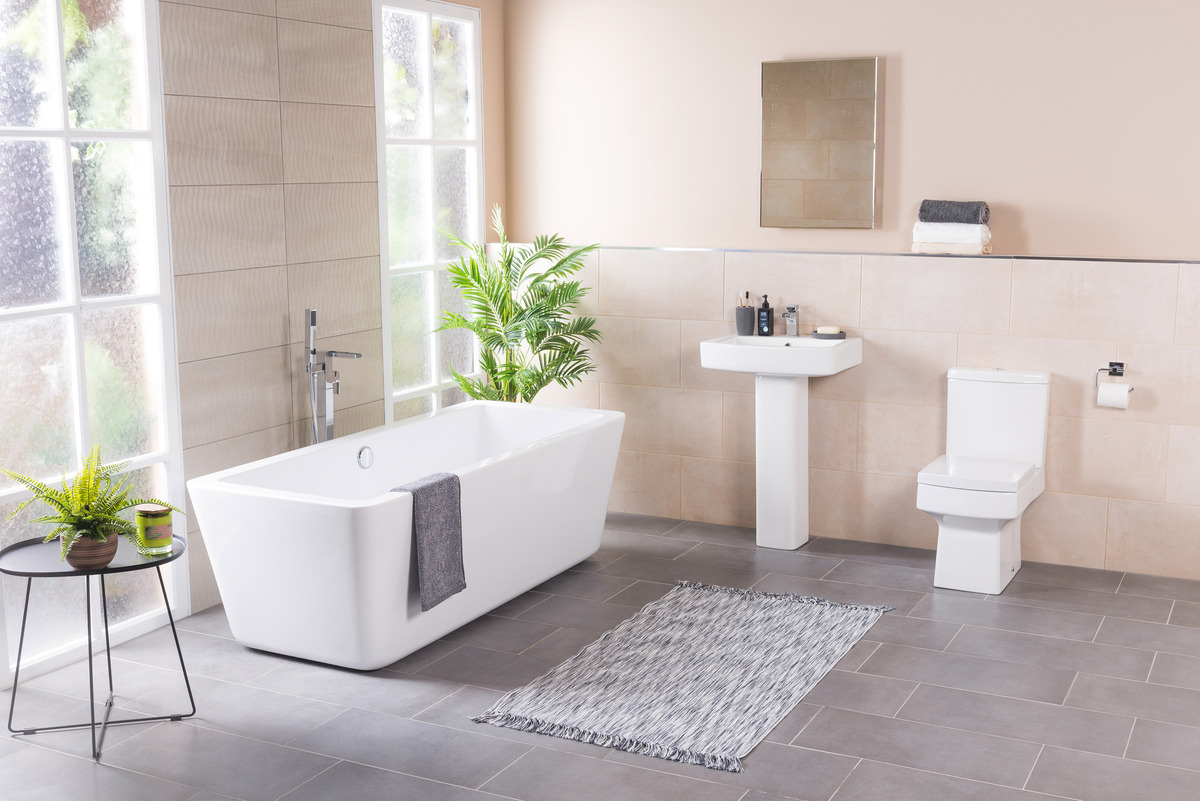Designing for All: The Essentials of Accessible Bathrooms

Nowadays, accessible bathrooms are commonly seen in most homes. This is because it is no longer limited to PWDs (People/Persons With Disabilities). Ever since ergonomics came into play, more and more people have realized that not only can it be used in a work setting, it can also be used to modify bathrooms for easy accessibility.
In addition to this, the many design options it offers, make it a very popular choice for people who live independently, or those who just want a secure and stylish bathroom for both elderly and young members of their families.
The world of bathroom accessibility is an interesting topic; so now, let’s go deeper into it and learn some of the practical tips that we can use in designing a functional and innovative space for our homes.
The Key Elements
There are several key elements that make up bathroom accessibility. These elements are essential because it enables people with disabilities and mobility issues to move more confidently inside their bathrooms. These well-designed bathrooms help these individuals to move independently with ease, despite the physical challenges.
Now, these key elements can also give you a comfortable bathroom experience since this can be incorporated now to any household. So let’s delve further into this and learn about the different key elements that make a good bathroom accessible.
Grab Bars
We cannot talk about bathroom accessibility without talking about grab bars. This is number one on this list because it is usually the first thing that comes to mind when designing an easily accessible bathroom.
These adaptable devices are commonly seen mounted on to walls beside the toilet, bathtub, or shower area. Its main purpose is to make sure that the PWD or person with mobility issues does not slip or fall when standing up from a sitting position, or vice versa.
Now, grab bars can be seen practically anywhere since they no longer cater to just the physically impaired, they can be installed to any bathroom for added support and safety.
Remember to opt for ADA-compliant grab bars (American with Disabilities Act). This is mainly because these grab bars are more likely to be sturdy and strong, and can bear the user’s weight.
Lastly, these devices come in different design options that will blend with your bathroom’s interior design. Making it innovative and versatile, while still providing safety.
Accessible Sink
What are accessible sinks? If you are still unfamiliar with this, it is a sink that wheelchair-bound individuals may use. It is lower in height, making it accessible for these individuals, as well as having a deeper basin. It is easier for people on wheelchairs to use these types of sinks as they can easily roll up to it.
Also known as wall-mounted or pedestal sinks, this variety has different features such as the single-lever faucet or the touchless faucet which is easier for people who have dexterity issues.
Furthermore, to prevent getting injured or acquiring accidental bumps, it is always good to choose a sink design with rounded edges. Remember, comfort and easy access is provided to the user if the sink has correct knee height and space.
Non-Slip Flooring
Bathrooms can become slippery, especially when one is showering. So to reduce slipping or falling, having non-slip flooring installed is a good option. There is a wide array of selection when it comes to non-slip flooring. There are different styles and colors that you can pick that will best suit your bathroom’s interior and motif.
Flooring materials can be textured tiles, vinyl or rubber flooring. All three are good options depending on your budget and bathroom design, because they all still serve the same purpose; which is to prevent falls or slips.
Additionally, these are ideal for a bathroom environment due to the materials’ better traction. Ensuring safety even when floors are wet.
Lastly, make sure that when being installed, be careful and watch out for gaps and uneven surfaces because these things can cause one to trip and get wounded
Accessible Toilet
Accessible toilets typically have higher seats than the traditional ones. This is because it was created to assist people with mobility issues; from sitting on a wheelchair to transferring to the toilet seat with ease.
In addition to this, to make it more safe and easy for the PWDs to use these toilets, grab bars are situated and installed near the toilet for easy transfer while supporting their weight. These toilets have features like raised seats, and are typically made to meet ADA (Americans with Disabilities Act) requirements.
Remember to choose one that meets yours or your family members’ needs since installing it requires ergonomics to ensure proper posture and safety.
Lastly, regular maintenance should be practiced to ensure proper working conditions of these toilets to satisfy one’s needs.
Wide Doorways
A wider doorway provides enough space for people using crutches or wheelchairs. This is because regular doors make it difficult for people in assistive devices to pass through. This can lead to feeling constricted because of the limited hand and arm movements they can perform.
Furthermore, a wider space is more comfortable for these individuals because aside from a wider range of motion, accidents and bumps will be avoided. To add to that, the width of these doors are typically at least 36 inches wider, providing easy entry and exit.
In addition, a bathroom with a wide doorway usually has bigger space inside for the person in the wheelchair to navigate around independently.
Lastly, opt for a door with levers instead of door knobs for people with dexterity problems or cannot grip yet due to an injury. This will lessen the physical stress, as well as the negative psychological effects that come with lack of independence.
The Benefits
There are benefits to having an accessible bathroom; not only is it useful and safe for family members who have mobility issues and physical disabilities, it can also make your bathroom experience more comfortable due to the ergonomic aspect that it offers.
Let’s further discuss what you and other PWDs can benefit from using bathrooms with accessibility.
Independence
Aside from the innovative designs that bathrooms with accessibility provide, they offer a sense of self-sufficiency for people who may be wheelchair-bound or suffer from other physical disabilities.
These innovative designs were created to cater to them, to assist them in everyday tasks that should be done privately. This helps them to be independent again, hence promoting higher self-esteem, and self-fulfillment.
Safety
Bathrooms with accessibility have features like grab bars, non-slip flooring, higher toilet seats, levers instead of doorknobs, as well as accessible sinks. All of these make for a comfortable and safe bathroom experience, preventing injuries and accidents.
Furthermore, these features aid these individuals in becoming independent again. Having to rely on others all the time in performing daily private tasks can make these individuals feel frustrated. With the help of these bathroom features, routines can be done independently with ease.
Inclusivity
Bathroom inclusivity means that this goes beyond its original purpose. Yes, these bathrooms were originally designed for people with disabilities or mobility issues, but these bathrooms may be used also by seniors and individuals with only temporary limitations.
Inclusivity in bathrooms considers its user’s diverse needs. The design features and layout promote independence and safety for everyone, thus leading to boosted self esteem and dignity.
Key Takeaway
The goal of accessible bathrooms is to provide independence, safety, and inclusivity. All the key elements mentioned above are what makes for a safe and comfortable bathroom. From grab bars, accessible sink, to non-slip flooring, as well as from accessible toilets to wide doorways, each of these features play a significant role in promoting independence in PWDs and individuals with mobility issues.
Furthermore, these designs and features are not limited only to PWDs and goes beyond that. Understanding this means that we and other individuals such as seniors and people with only temporary limitations can also benefit from what bathroom accessibility offers.
Ultimately, if you want to design a bathroom that promotes the quality of life for all who want to use it, bathroom accessibility is the best way to do so!




